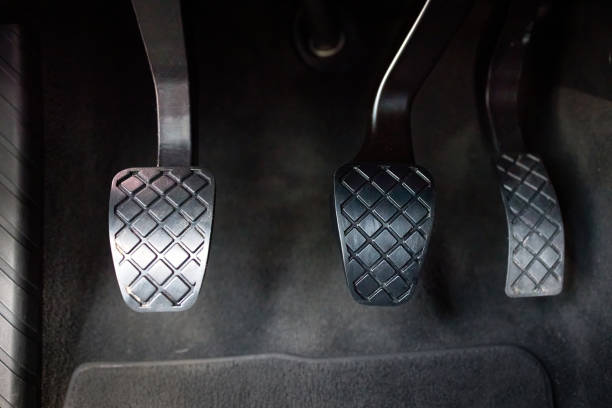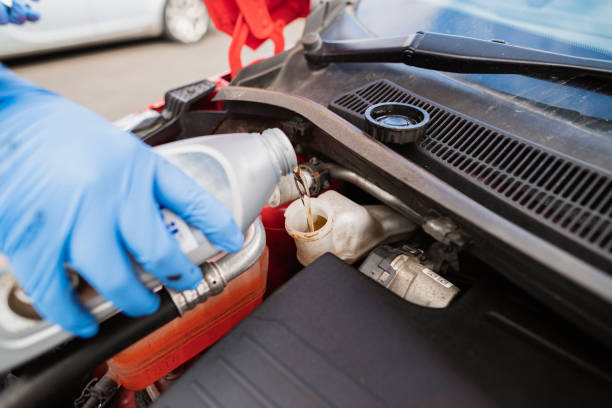Your car is a complex beast. Even if one component is working fine but is showing abnormal signs, you must troubleshoot immediately as this is often a symptom of some malfunction. A common example is you might find the brake pedal goes to floor but still works.
If your brake pedal sinks to the floor when you press, there can be many possible culprits for this problem. But worry not, this maintenance guide will give you the steps to troubleshoot and fix this issue of the brake pedal going to the floor in under 45 minutes.
Contents
Brake Pedal Goes To The Floor – What Exactly Is Happening?
Your brake pedal might not feel as firm as usual when you press down on the pedal. You don’t feel the same level of pressure; instead, the pedal feels mushy or spongy.
The car still stops, but you might need to press down hard so that the brake pedal sinks to the floor. The pedal might sink slowly or fast. In other cases, the brake might not work at all.
This is called a “sinking” or “soft” brake and is especially problematic if it suddenly happens one day without any warning. Normally, even if you try to stomp on the brake pedal, it should not sink to the floor easily.

Read more
- Why Are My New Brakes Squealing? – The Reasons And Cure
- Car Shakes When Braking: What You Need To Know
Brake Pedal Goes To Floor – Common Reasons
Leaking brake fluid
“Brake fluid” is a car term you will hear a lot and must familiarize yourself with. Without brake fluid, your car would not be able to stop at all.
Brake fluid is a compressible hydraulic liquid used to move or apply force on the various components of a car’s braking system. Brake fluid runs throughout the brake lines. Whenever you press down on the brake pedal, the compressed brake fluid is sent down the lines, generating force so that the brake calipers clamp on the brake rotors to stop the turning wheels.
The brake fluid functions in a high-temperature, high-pressure environment.
A bad brake master cylinder
The pressurized brake fluid is sent through the brake lines by the brake master cylinder, which acts as a pump in a car’s braking system.
When you press down the brake pedal, this force is transmitted to the piston of the master cylinder, which pushes down toward the brake lines, sending the brake fluid down the system.
The piston seals within the cylinder can age and wear out, forming internal leaks. This is more likely to happen if brake fluid is contaminated. For example, extra moisture can develop in brake fluid, causing corrosion in the master cylinder, brake calipers, and other components in the brake lines.
To avoid contamination, a good rule of thumb is to check the color of the brake fluid whenever you have regular oil changes. Expect to change your car’s brake fluid every four to five years.
While regular brake fluid is clear or light gold, contaminated brake fluid is usually dark brown or black in color.
How do you use the brake?
Conditions of use and maintenance play a huge part in how well your vehicle functions and holds up over time. Bad driving habits can cause amazingly rapid wear and tear.
The more the brakes are used, the hotter the components in the braking system, including the brake fluid. When the brake fluid gets hotter, it turns from a thicker liquid to a thinner, runny liquid.
With a thicker liquid, the brake master cylinder needs less force to pressurize it to operate the brakes. With a thinner liquid, much more force is needed.
If you have soft brakes but cannot find anything wrong with your brake system, it might be your bad driving habits. Don’t ride the brakes, and make sure you take off the parking brake before your car starts rolling.
A bad brake booster
As you might have known, your car’s combustion engine works like a giant air pump and functions thanks to the vacuum, or pressurized air, created inside the combustion chamber.
Many parts in your car utilize this vacuum to function, one of which is the brake booster. As its name suggests, the brake booster takes advantage of the engine’s vacuum pressure to amplify, or boost, the force applied to the brake pedal every time you press down on it.
Thanks to this brake booster, you only need to apply a little force on the brake pedal to slow down or bring your gigantic vehicle to a full stop. If the brake booster is bad, then you need to apply a large amount of force for the master cylinder to pump the pressurized brake fluid down the system.
This means the brake pedal might have to travel downward beyond its normal throw and you might find the brake pedal goes to the floor.
To better understand how the brake booster works with other components of a car’s brake system, refer to these comprehensive guides below.
Read more
- The Brake Booster: How It Works In The Braking System
- How To Tell If Brake Booster Is Bad?
- The Easy Way To Do A Brake Booster Replacement
Brake Pedal Goes To Floor – Troubleshoot & Fix In Under 45 Minutes

Check for brake fluid leak
The first thing to check when your brake pedal goes to the floor is to raise the hood and check the brake master cylinder’s reservoir. If the reservoir is empty or the brake fluid level is low, there is most likely a leak somewhere in the brake system.
Check the backside of each tire. If it is wet with a thick fluid, you likely have a leaking brake caliper that’s allowing brake fluid to leak through their brake fluid seals, in case your car has a disc brake system.
In case your car has a hydraulic drum brake system and you find fluid on the tire’s backside, you have a leaking wheel cylinder with bad seals.
In both cases, the leaking brake caliper or wheel cylinder needs to be replaced.
Also inspect the brake line flex hoses for possible cracking or corrosion, which would call for replacement.
Read more
Check master cylinder
Check the rear of the master cylinder where it connects to the brake booster. You might see brake fluid leaking from the rear of the brake master cylinder and from the front of the brake booster. If there is indeed a leak, the brake master cylinder must be replaced.
The leak from the master cylinder can be caused by its worn internal seals. When these seals wear out, brake fluid will leak out from the rear of the brake master cylinder, causing an intermittent soft brake pedal.
In this case, it is generally possible to remove and replace the worn seals. However, many manufacturers of brake master cylinders do not sell seals separately, thus you might not be able to get the correct seals to match your brake master cylinder.
Therefore, you can either try to have the seals replaced or replace the whole master cylinder unit.
Bleed the brake system
Bleeding means removing any air bubbles out of a car’s hydraulic braking system. With air leaking into the brake lines, the system cannot pressurize and pump brake liquid at optimal conditions.
Air can leak into the brake lines in very small quantities from any component with rubber seals, including the brake caliper or wheel cylinder, and the brake master cylinder.
Check out the step-by-step guide below to bleed your brakes at home.
Check brake shoes
In case your car has a drum brake system, after the above most common reasons for the brake pedal going to the floor, check your car’s rear brake shoes. If the brake shoes are worn, the air gap between the shoe and the drum will be enlarged, making the brake pedal travel downward beyond its normal throw.
In this case, the worn brake shoes need to be replaced or adjusted according to the guide below.
Watch more:
Check axle bearing
The axle bearing or wheel bearing is the component that holds the brake rotors fixed in place. If the bearing is not functioning properly, the brake rotors can be loose and move around, creating an air gap between the rotor and the brake calipers.
When there is such a gap, the caliper fills with fluid to close the gap, causing the brake pedal to go to the floor. This typically happens after turning a hard corner.
If your brake has been working just fine but you the brake pedal goes to the floor after turning sharp corners, try pumping the brake pedal twice or more for it to return to its usual state. After checking for all the other more common culprits, check for any loose axle bearings and replace them if needed.
Now you know what to do if the brake pedal goes to the floor. As a bonus, check out these easy-to-understand guides on other common brake-related questions that you should know:
The braking system is undoubtedly vital for safe driving, thus make sure you troubleshoot as soon as noticing something strange and perform frequent check up and maintenance for every component of the braking system.



